
Lorem ipsum dolor sit amet, consectetur adipiscing elit. Nulla iaculis molestie nunc, ut mattis tellus blandit vitae. Pellentesque cursus enim eu erat maximus, sed elementum urna gravida.
From identifying exempt species to submitting the right paperwork, we’ve got you covered.
Understanding Newcastle Council Tree Removal Regulations
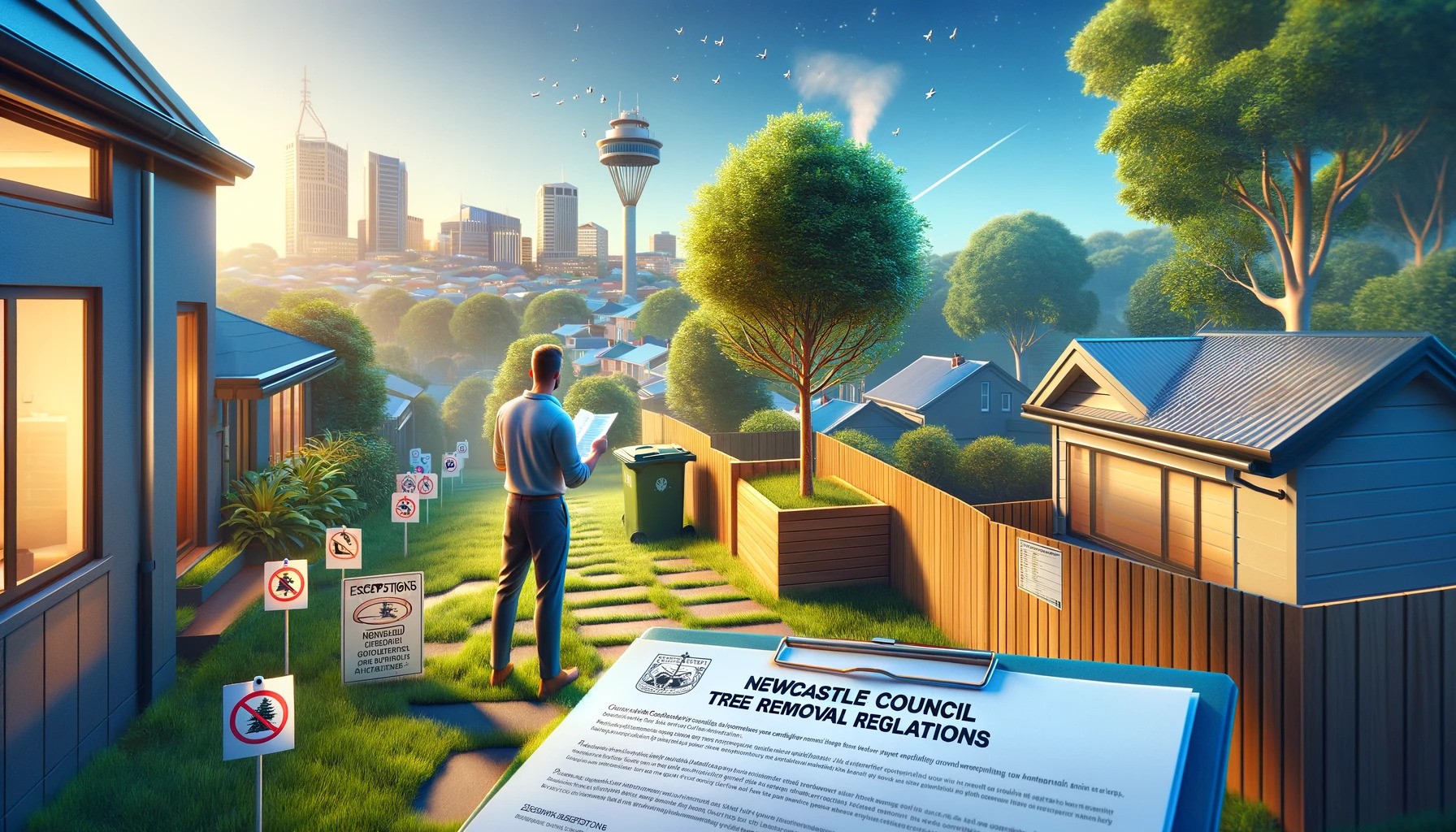
In the beautiful city of Newcastle, trees are more than just pretty to look at, they’re vital to our surroundings and play a crucial part in our environment. That’s why local council takes tree maintenance and removal seriously.
If you’re considering any significant tree work on your property, you’ll likely need council approval unless the tree is exempt according to specific rules.
Some key points to remember about tree removal in Newcastle are:
- You’ll need council approval for any significant tree work, including removal on private property.
- Not every tree falls under strict rules, some have exemptions.
- It is important to follow the rules to protect our environment and preserve the beauty of our city.
And just a heads up, if your reason for tree removal is just because it’s blocking your view or dropping leaves everywhere, that probably won’t cut it with council.
So, before you plan to remove that towering gum from your backyard, remember, that you don’t want to go rogue here. Ignoring these guidelines can hit you with some serious fines and legal drama.
Private Trees

While you may think that the trees in your backyard are private trees, they aren’t just your own. They’re under the council’s watchful eye and are subject to the council’s regulations. Any removal of trees requires council consent thanks to the rules in the Urban Forest Technical Manual.
Wondering why there’s such a big deal about tree removal. It’s simple really. Every tree, whether it’s sitting in a public park or your backyard, plays a vital role in keeping our environment balanced. They do help us to breathe after all, so we can’t just go and cut them down whenever we feel like it.
If you’re looking to remove a tree from your property, you’ll need to fill out a Private Tree Removal Application Form. This is unless you’re clearing the way for some development work. There’s a different process to go through for that.
Getting this application sorted involves a couple of steps. First off, you’ll need a thumbs-up from everyone who owns the tree. If the tree’s ownership is a bit of a question mark, then you’ll need the green light from the neighbour. And for those trees that carry a bit of history – like heritage-listed ones, Aboriginal objects, or those standing in places of Aboriginal importance – you’ll need to provide the full name of the owner, too. Remember, trees aren’t just big plants… they’re a crucial slice of our cultural heritage and the backbone of our ecosystem.
Heritage Items
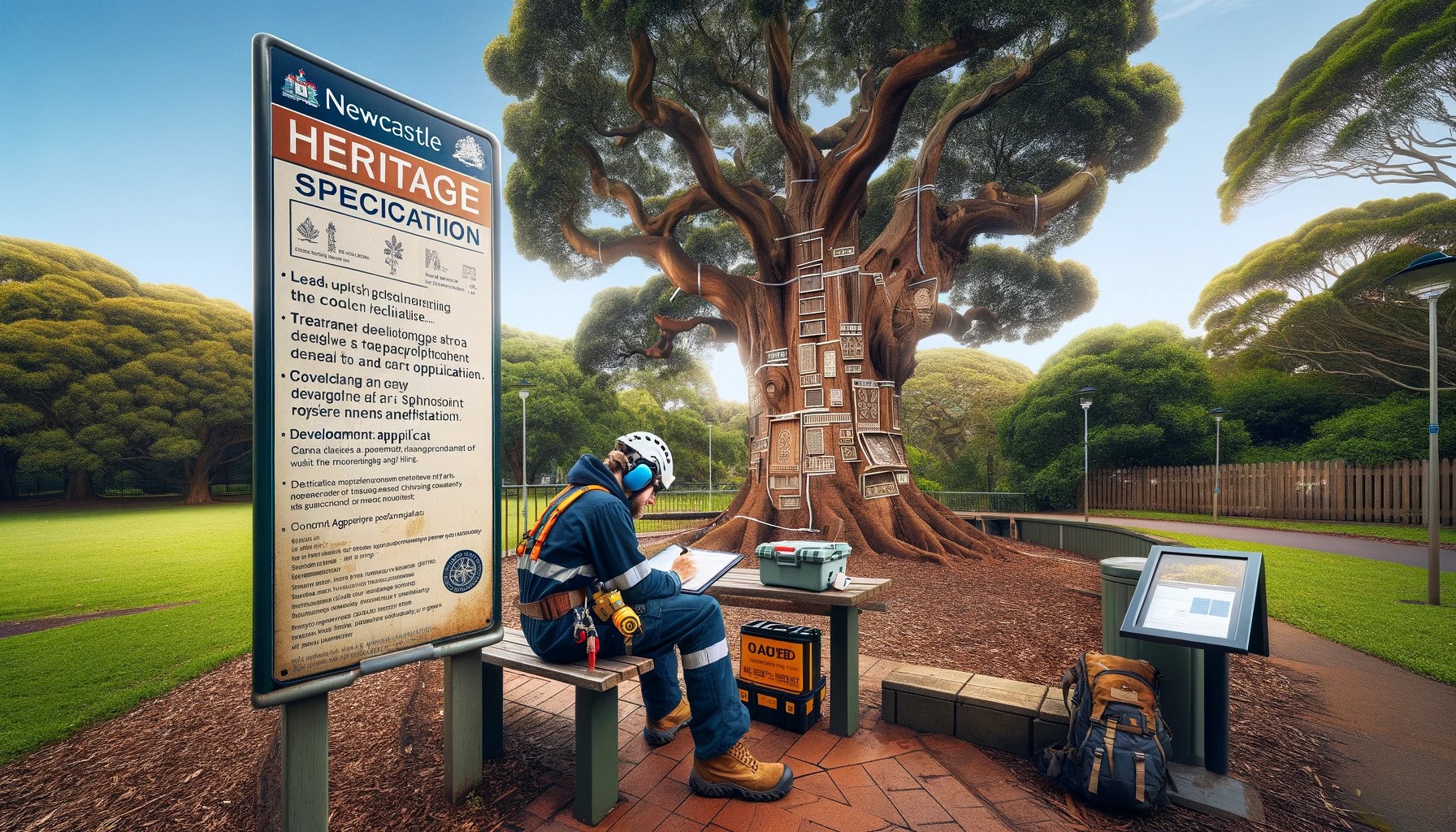
When it comes to heritage-listed trees or those tied to Aboriginal heritage, the rules tighten up even more. And it’s a lot harder to get the usual exemptions. In order to remove or prune these trees, a development application must be lodged and you’ll also need a detailed pruning plan and report from a qualified arborist.
Plus, you’ve also got to loop in the Heritage Council by sending them a copy of your application as well. All of these steps are there for good reason too – they’re about keeping our rich heritage intact for generations to come.
There’s also one more thing to consider.
If the tree or shrub is part of an Endangered Ecological Community, associated with a Native Vegetation Community, or is a Threatened Species, a Native Vegetation Removal Permit would be needed instead. And if those trees or shrubs are hanging out within 100 metres of a SEPP14 wetland then yep, that’s permit territory too.
Identifying Exempt Tree Species and Situations

While council regulations are really strict, not every tree in your backyard needs a nod from the council before you decide it’s got to go. There are certain trees and scenarios where the usual council rules don’t apply.
Let’s take a look at tree species that are exempt from the rules.
Exempt Tree Species
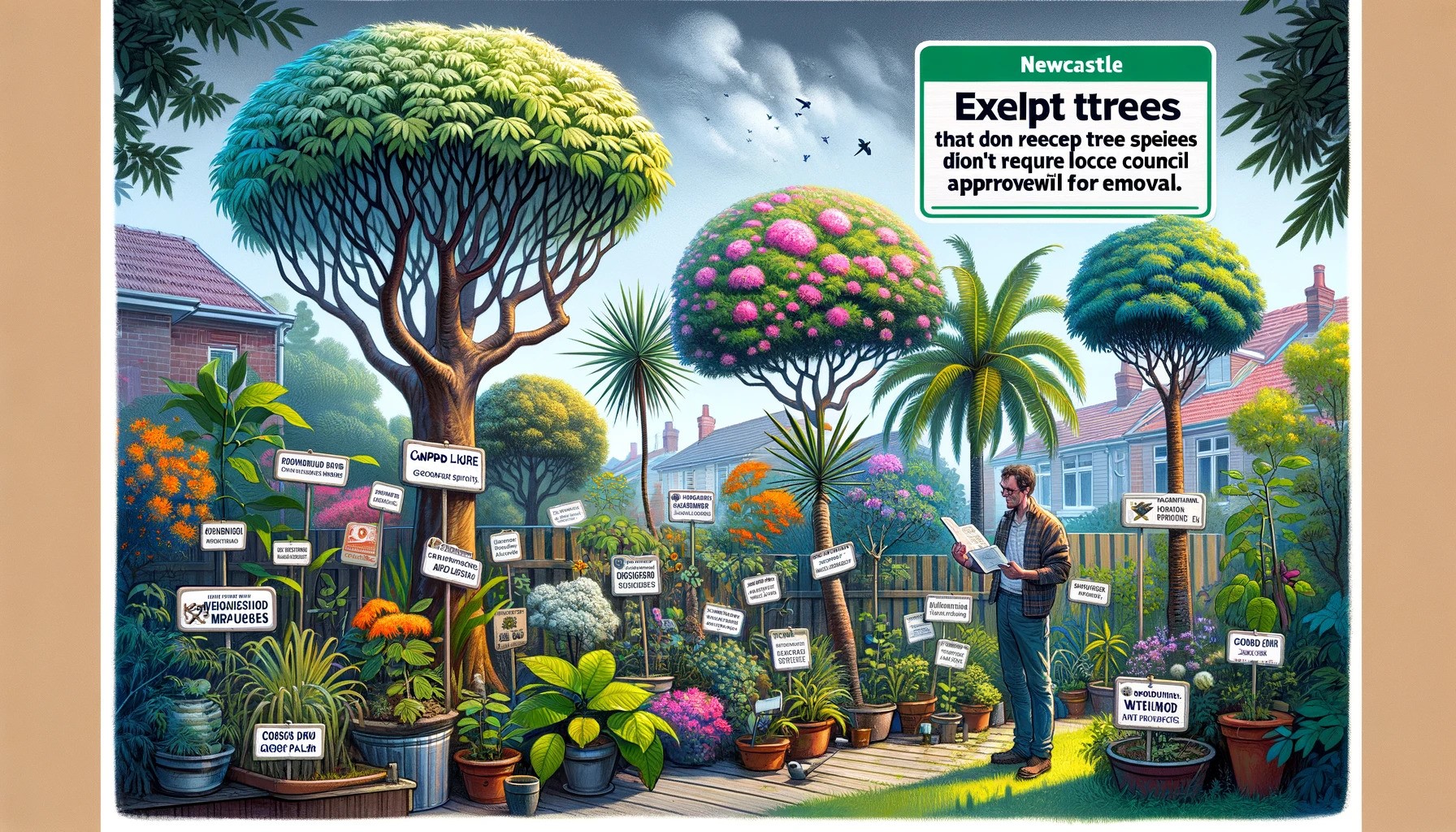
Newcastle’s home to a vast array of tree species, and some of these don’t require the council’s go-ahead for removal. Generally, these are the types that don’t play nice with our local ecosystems—think invasive or non-native species like:
- Camphor Laurel
- Umbrella Tree
- Cocos Palm
- Willow Tree
Sure, these trees might add to the scenery, but they can also muscle out the local greenery and mess with the area’s biodiversity. But here’s the thing—just because a tree doesn’t need council approval to be removed, doesn’t mean it should be chopped down without a second thought. Every tree contributes to the city’s green fabric in its own way, so it’s worth taking a moment to consider the impact of removing it.
Dead, Dying, or Dangerous Trees
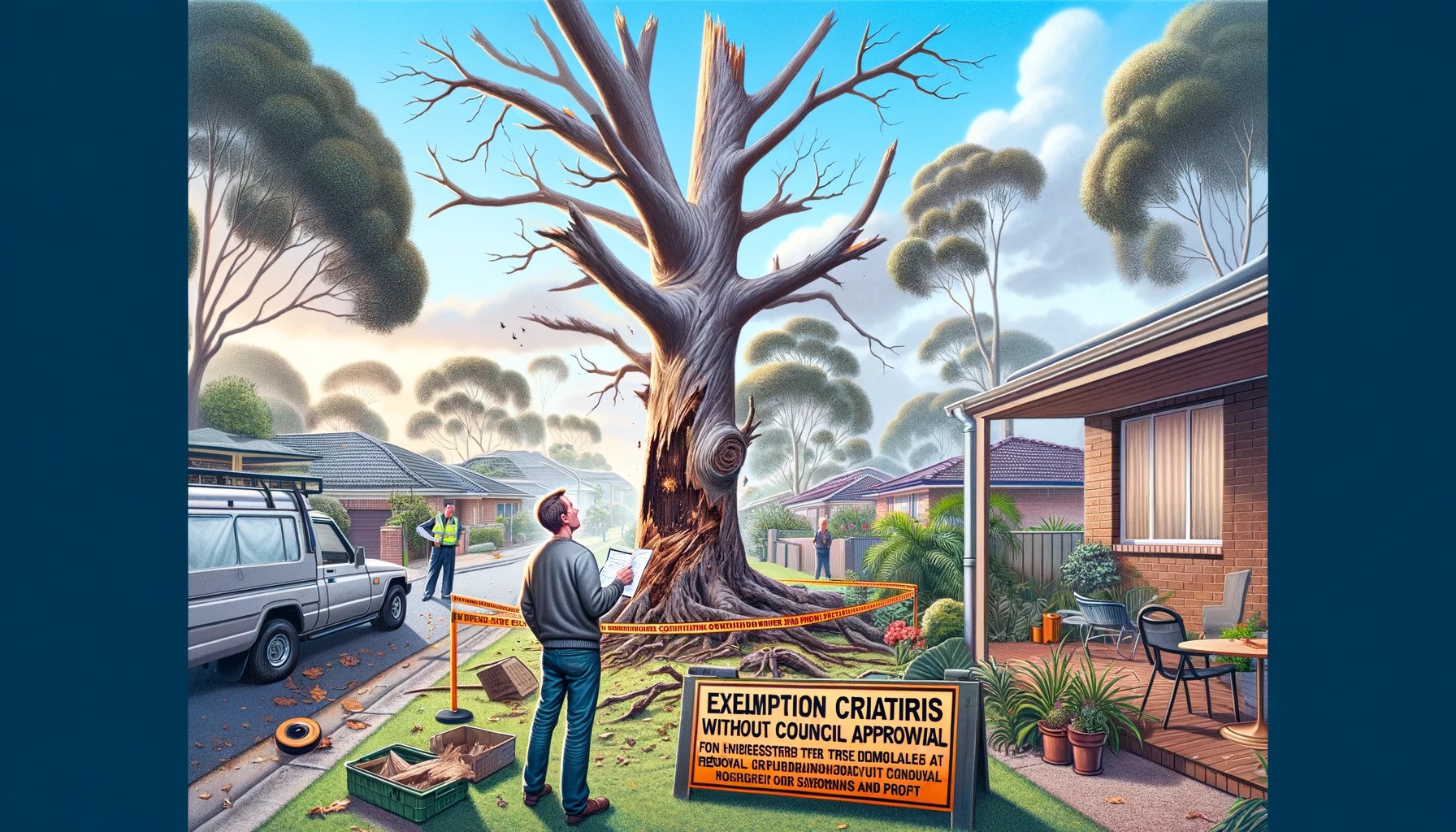
While we all get why it’s crucial to keep our city’s green spaces lush and alive, there are times when a tree might be more of a hazard than a haven. Trees that are dead, on their way out, or just plain small might not need the usual thumbs-up from the council to take down. But, hold up, it’s not a free-for-all. Trees that are:
- Part of an endangered ecosystem,
- Nestled in native vegetation,
- Classified as a threatened species,
- Or lounging too close to a SEPP14 wetland,
…Yeah, those guys need a special permit for removal.
If you’ve got a tree that’s either dead or looks like it’s seen better days, there’s a form for that—the Dead or Dying Tree Removal Form. But let’s say your tree is also a heritage item, tied to Aboriginal heritage, or protected by development rules, then you’re back to square one needing approval. And if your situation doesn’t fall under any of these exemptions, you’ll need to fill out the regular application for removal.
For those oh-no emergency moments, like after a storm or when a tree’s messing with essential services, the council might step in to handle things directly. Plus, if you’re living in an area covered by the 10/50 Vegetation Clearing Scheme, you can clear trees within 10 meters of your home without needing to ask for permission.
Preparing Your Tree Removal Application

After confirming that your tree isn’t exempt from council approval, you can start preparing your application. This process involves:
- Gathering property details
- Compiling an arborist report if required
- Preparing a site plan with attachments
- Obtaining consent from all tree owners and obtaining a signed copy
- Submitting the application.
We’ll explore each step in more detail.
Gathering Property Details
Getting your property details right is key to nailing your application. Missing or inaccurate info could slow things down or even get your application kicked back. You’ll need specifics like the Development Plan (DP) number, Lot number, and Volume/Folio. Sure, it sounds like a lot of paperwork, but by dotting your i’s and crossing your t’s, you’re doing your bit to keep Newcastle’s green scene thriving and making sure tree removal is done by the book and eco-friendly.
Arborist Report
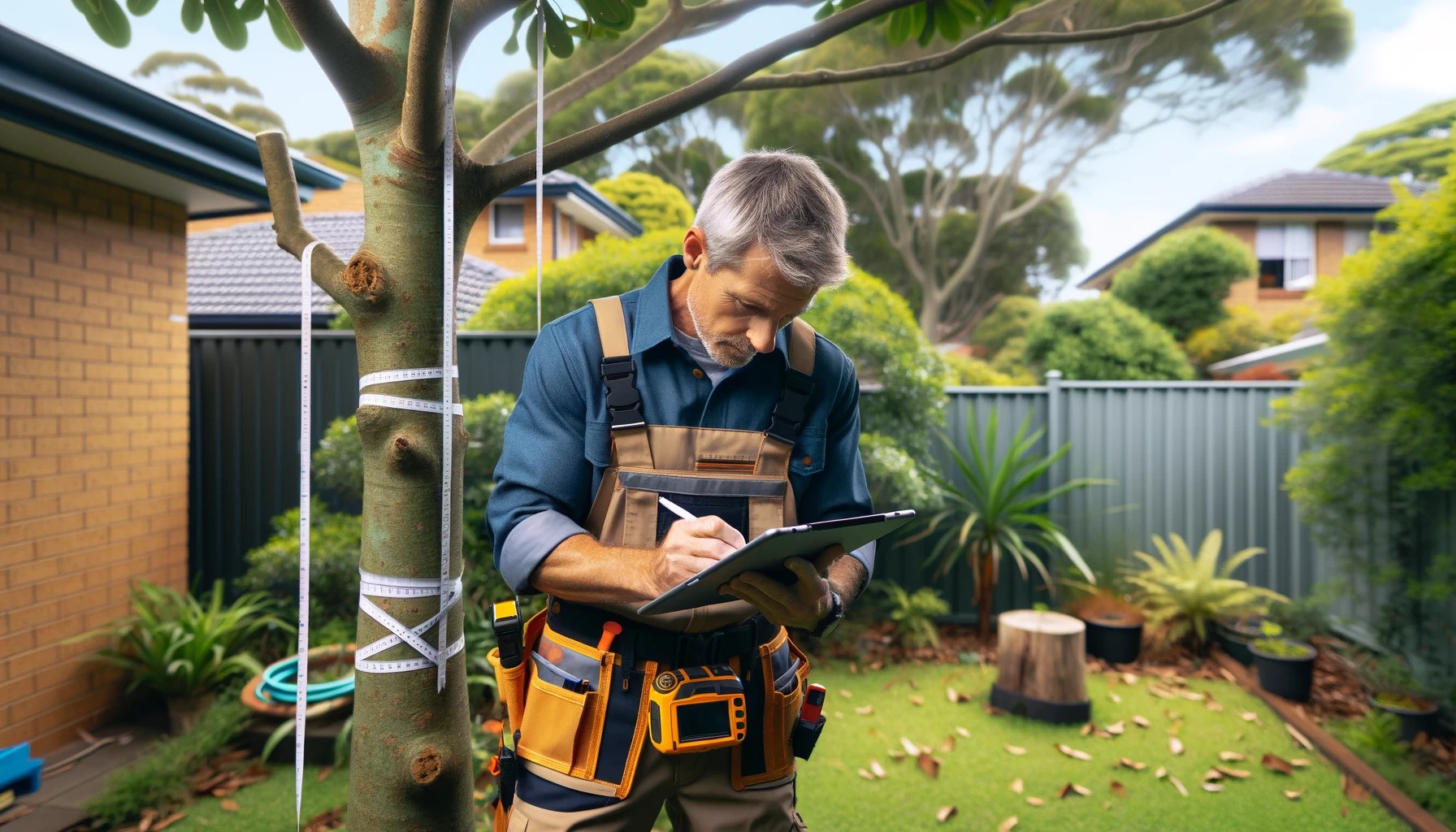
The Arborist Report is pretty much the backbone of your application, and you’ll need it when…
- You’re planning to remove more than three trees or shrubs,
- You’re taking out less than three but aren’t planning on planting new ones in their place,
- Or if there’s a heritage item involved.
This isn’t just any report; it’s crafted by a certified arborist and someone with at least a Certificate IV in Arboriculture, though a Diploma is preferred for the nitty-gritty assessments.
They’ll dive deep into the tree’s health, potential hazards, overall value, expected lifespan, and more, including specifics like species, size, and whether it’s worth keeping around. In essence, this report gives the council a comprehensive look at what the tree means to the local environment and what its removal might entail.
Site Plan and Attachments
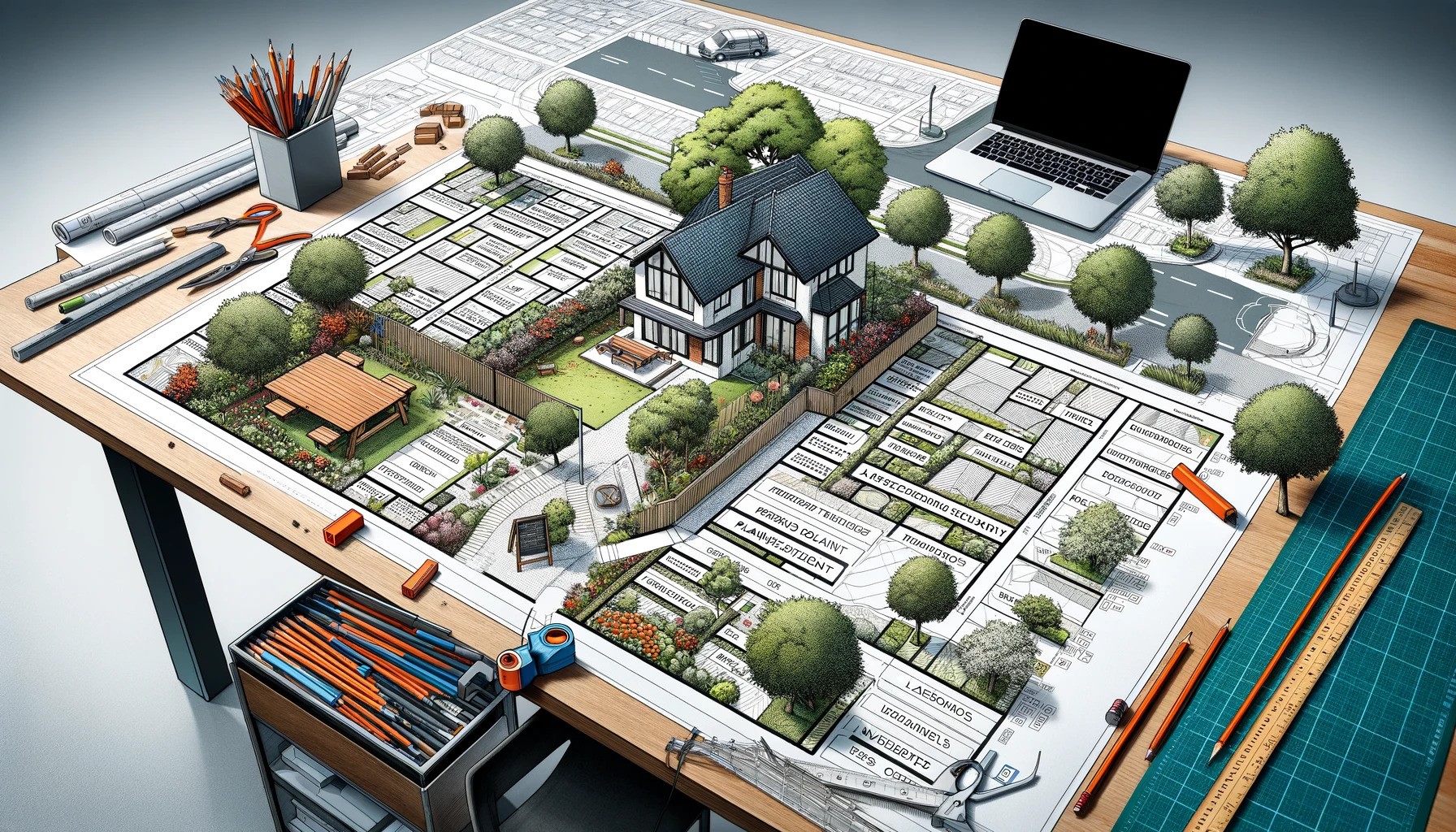
Your application isn’t complete without a thorough site plan to go with the Arborist Report. This plan is critical and should map out:
Exactly where the tree is,
- Any permanent structures,
- Walkways,
- Driveways,
- Landscaping quirks,
- Streets,
- Any signs,
- And easements.
It’s all about showing the council how taking down a tree will change the space. But this isn’t a simple sketch job. You might need to get this plan professionally done, and sometimes, it needs a stamp of approval from an architect, engineer, or surveyor to even be considered. Don’t forget to include clear photos of the tree, showing both its place in the landscape and its current state. While it might feel like jumping through hoops, each of these steps is crucial for giving the council the full picture so they can make a well-informed decision on your application.
Navigating the Development Application Process
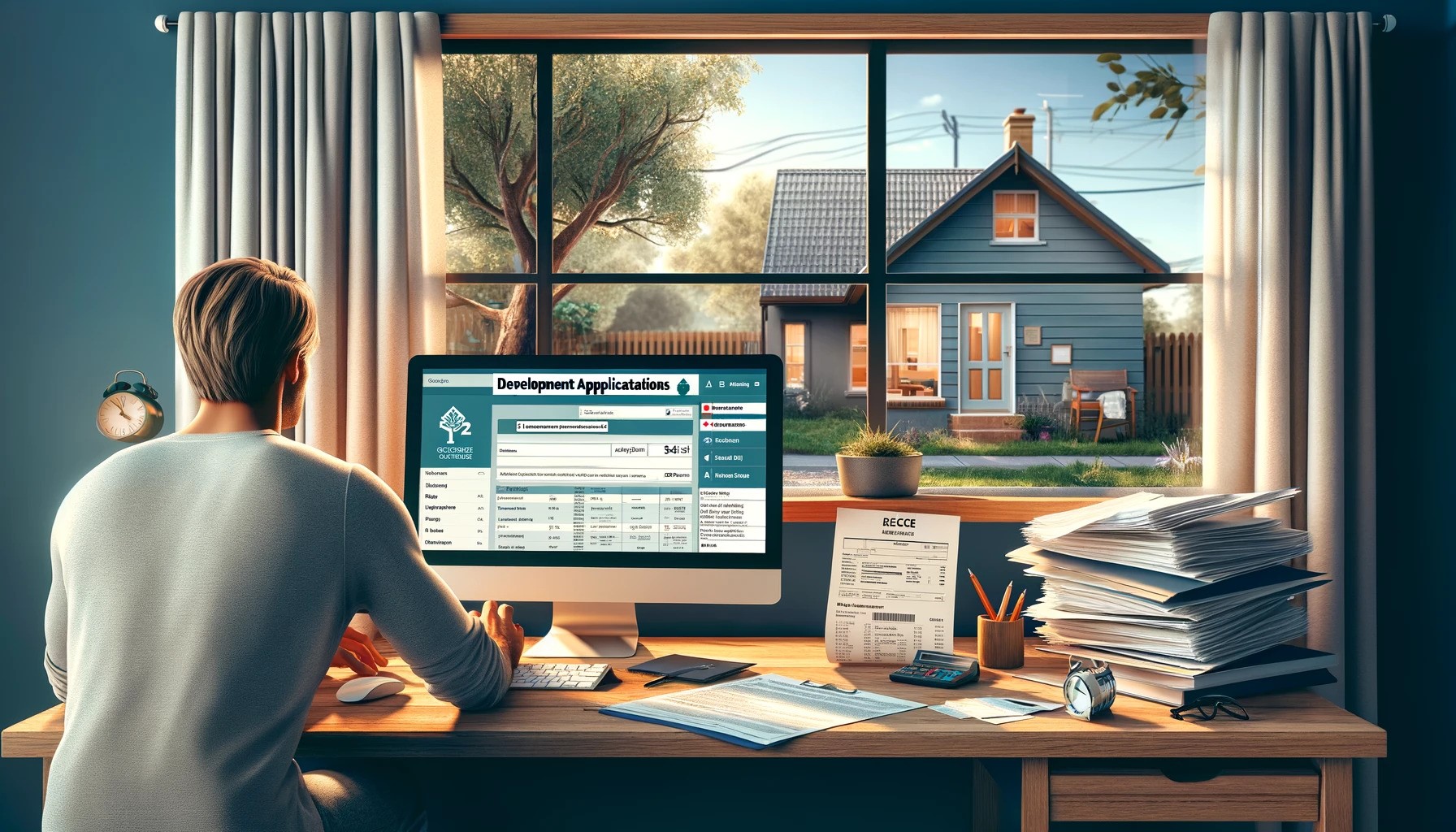
When your application is good to go, it’s time to dive into the Development Application process. This step means applying for a permit, sorting out all the details and the fees, and then sitting tight for the council to do their part—inspect and decide. It’s a bit of a wait, sure, but a solid application puts you in a great spot to snag that permit.
Applying for a Permit
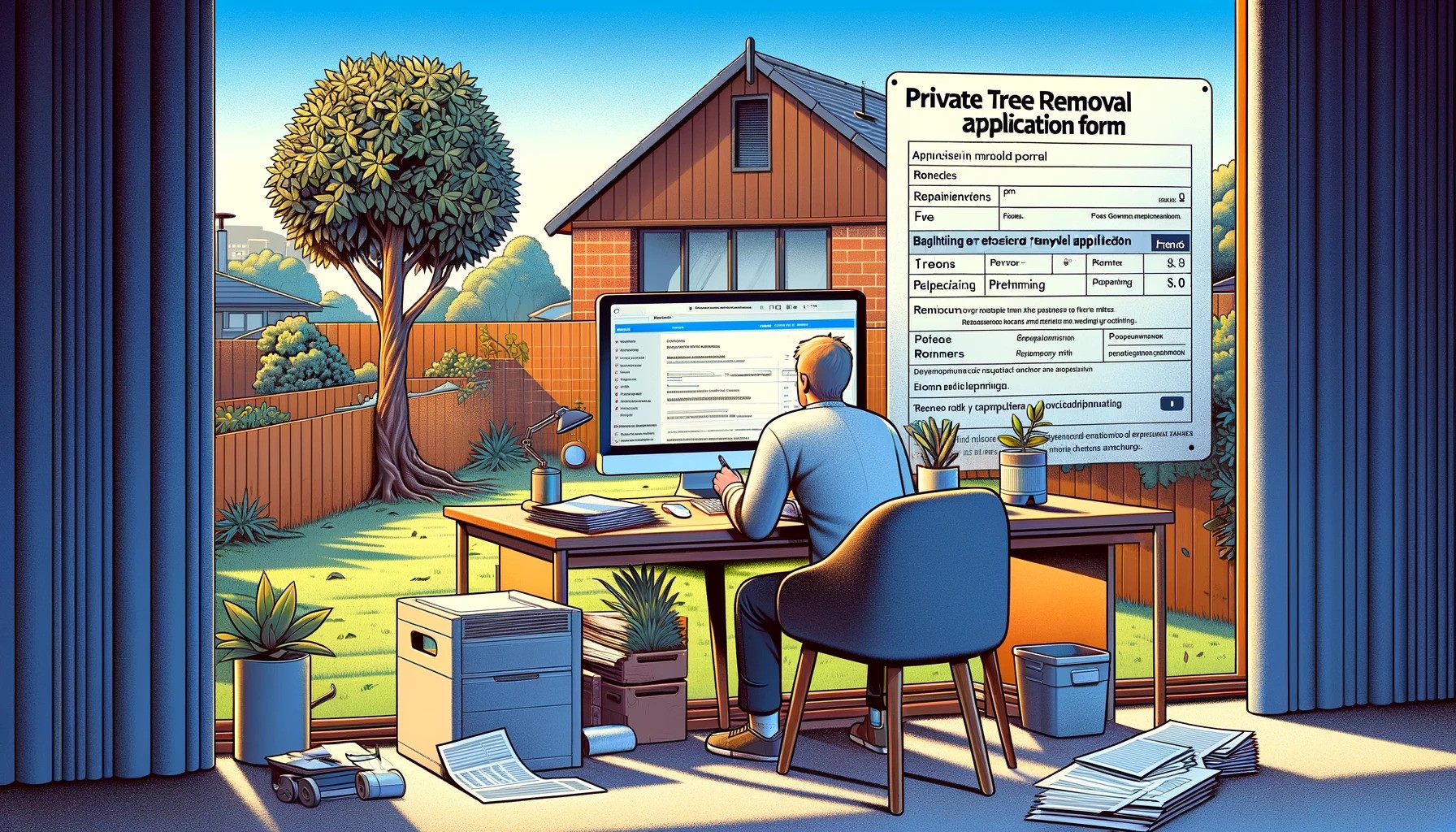
Snagging the permit is a multi-step dance. There are fees to pay up front, and they vary—if you’re a pensioner, you’ll get a different rate than everyone else. You’ll need to fill out an application form for tree services and any private tree or shrub removal that doesn’t fall under an exemption.
Your application should pack in a Private Tree Removal Application Form complete with a sketch, your reasons for wanting the tree gone, and, if you’re removing fewer than three trees but planning on replanting, the lowdown on what you’ll plant in its place. Removing trees on private property without any development plans in the mix calls for its own special form. Clear information and all the necessary paperwork, along with your payment, need to hit the Council’s desk when you submit. Yeah, it’s a fair bit of admin, but think of it as doing your part to keep our city’s green spaces thriving and well-managed.
Council Inspection and Decision

Once you’ve sent off your application, the council’s tree experts might swing by to take a closer look at the tree you’re looking to remove. Sometimes, they’ll ask for another arborist’s take to really nail down any potential risks to people or property. If the arborist’s report suggests taking the tree down and includes a TRAQ (Tree Risk Assessment Qualification) assessment, you’re probably on track to get that permit, unless your plans to prune or clear the area bump up against the rules set out in the Biodiversity Conservation Act 2016.
Navigating Tree Applications with Local Council:
Expect a decision in about 28 days.
Got your permit? You’ve got two years to use it.
If things don’t go your way and your application gets a thumbs down, the council will let you know why. This isn’t a hard stop—you’ve got room to talk things through with them, tweak your application, and try again. It’s all about finding the right balance for both you and the environment.
What to Do If Your Application Is Denied
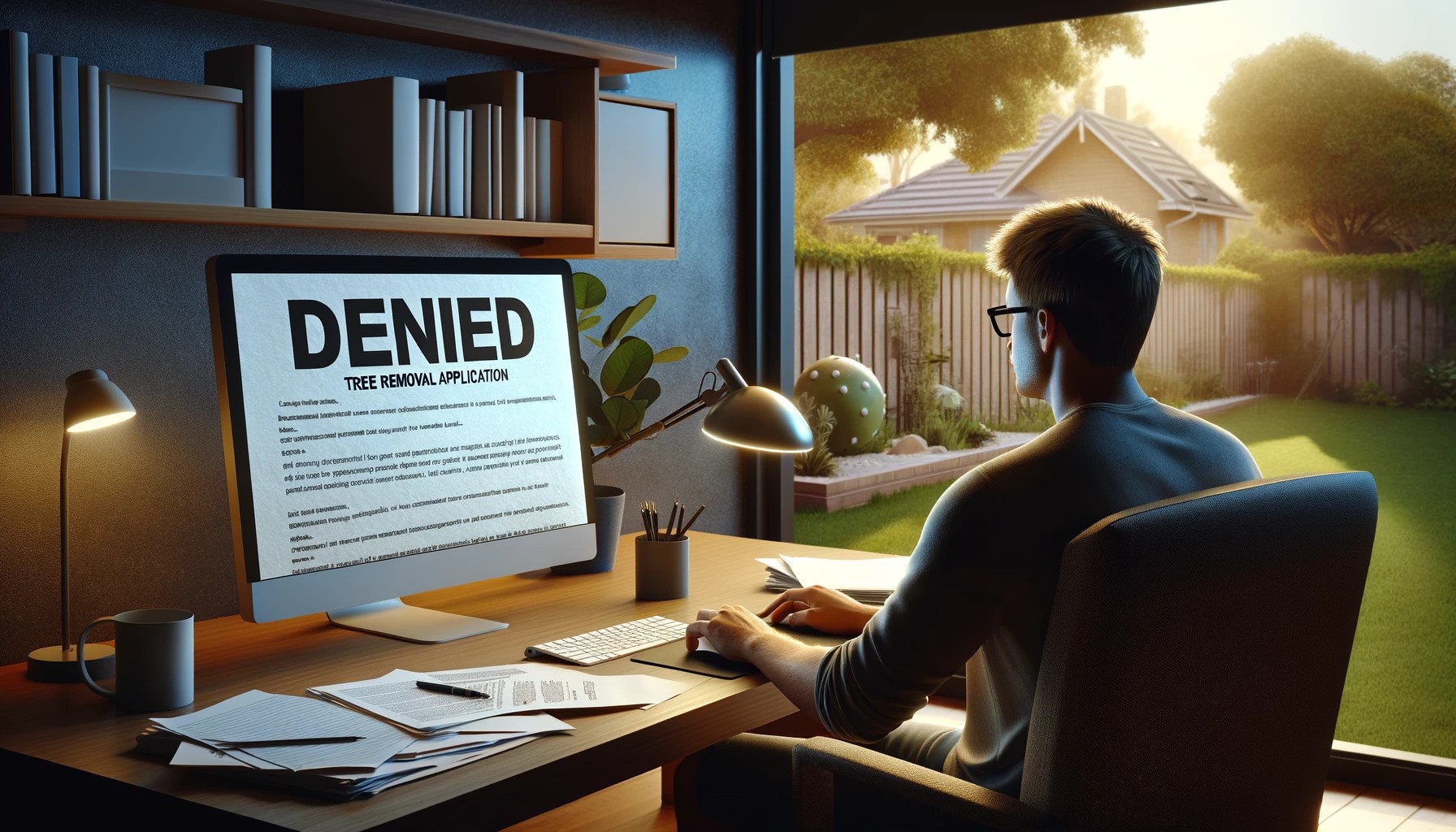
Getting a ‘no’ on your application can feel like a setback, but it’s not the end of the road. You’ve got options: ask for a review, make an appeal, or figure out a different approach. Let’s dive into what each of these paths entails and how they might work for you.
Seeking a Review or Appeal

A denial of your application can be disappointing, but you still have the option to request a decision review. This review process may involve getting additional evidence or other further information that might affect the council’s decision.
If the review process doesn’t swing in your favour, there’s no need to throw in the towel. You’ve got the option to take your case to the Land and Environment Court. This is where things get officially reevaluated, independent of any previous decisions. Filing an appeal under the Trees Act involves getting your paperwork in order and covering the court’s filing fee.
Once your appeal is in motion, they’ll set a date for a preliminary hearing. You’ve got to make sure a stamped copy of your application lands in the hands of both the neighbour involved and the local councils at least 21 days before this date. This legal path ensures your case gets a fresh, fair look.
Alternative Solutions – Think Outside the Box
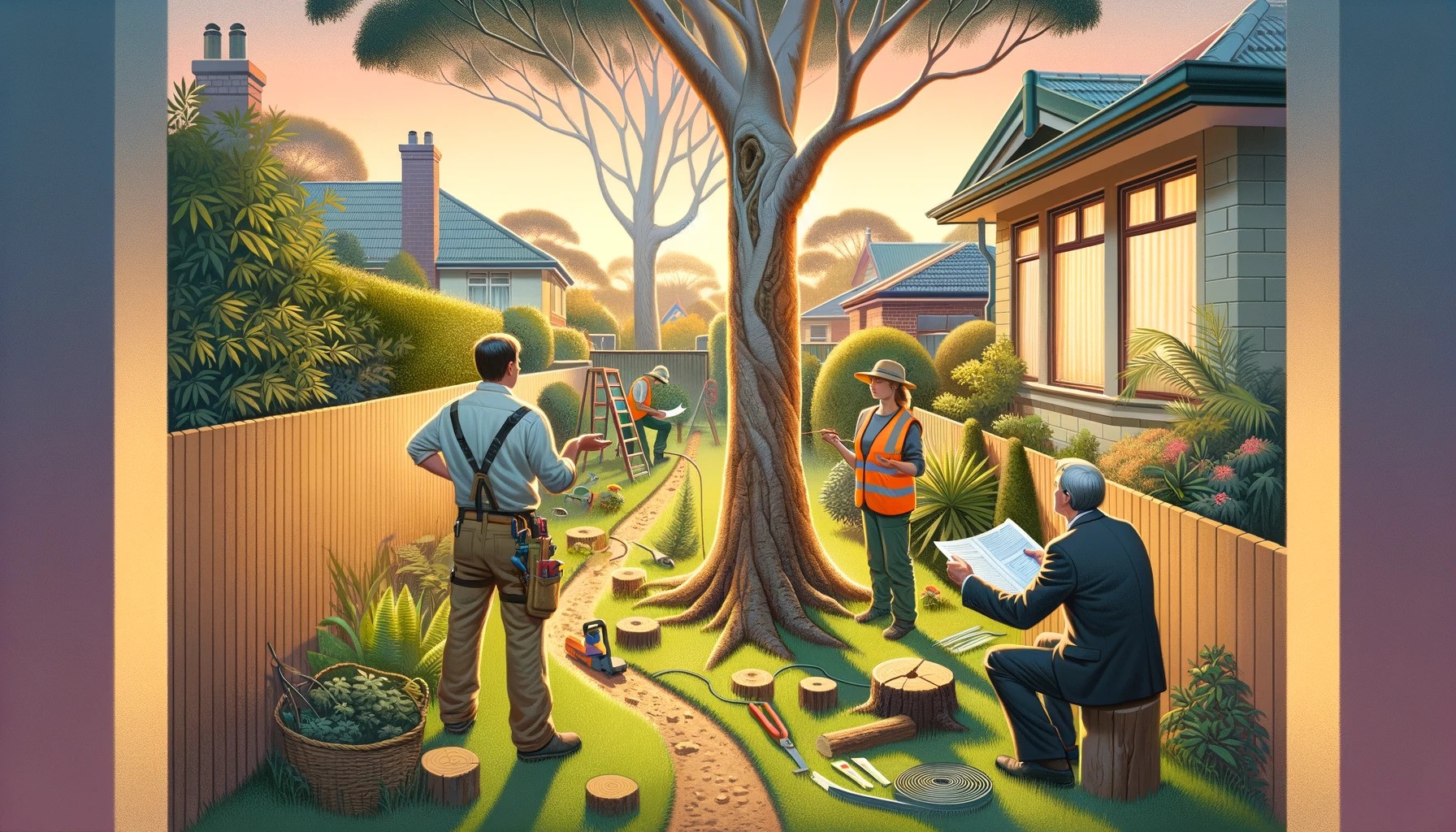
When your application hits a wall, it’s time to get creative with alternatives. For instance, pruning might strike the perfect balance between full-on tree removal and just letting things be, especially if the tree’s causing some issues but isn’t a lost cause.
Linking up with a seasoned arborist could open up new avenues for treatment or managing whatever’s ailing the tree. And if removing the tree really is the only option, say due to safety hazards or upcoming construction, consulting with a legal expert familiar with the ins and outs of local tree laws could strengthen your next move.
Every tree adds a chapter to our environmental story, so it’s worth exploring every possibility to keep it standing.
Managing Tree Pruning and Maintenance
Taking care of tree pruning and upkeep is every bit as crucial as deciding on tree removal. It’s not all about making your yard look good; it’s vital for the tree’s well-being, safety, and its role in the ecosystem.
Steps to Obtain a Council Permit
Once you’ve confirmed your tree isn’t protected (or that you indeed need a permit for the job), it’s time to dive into the application process. If you need more information on getting a permit from Newcastle council then visit their website.
Tree Pruning Standards
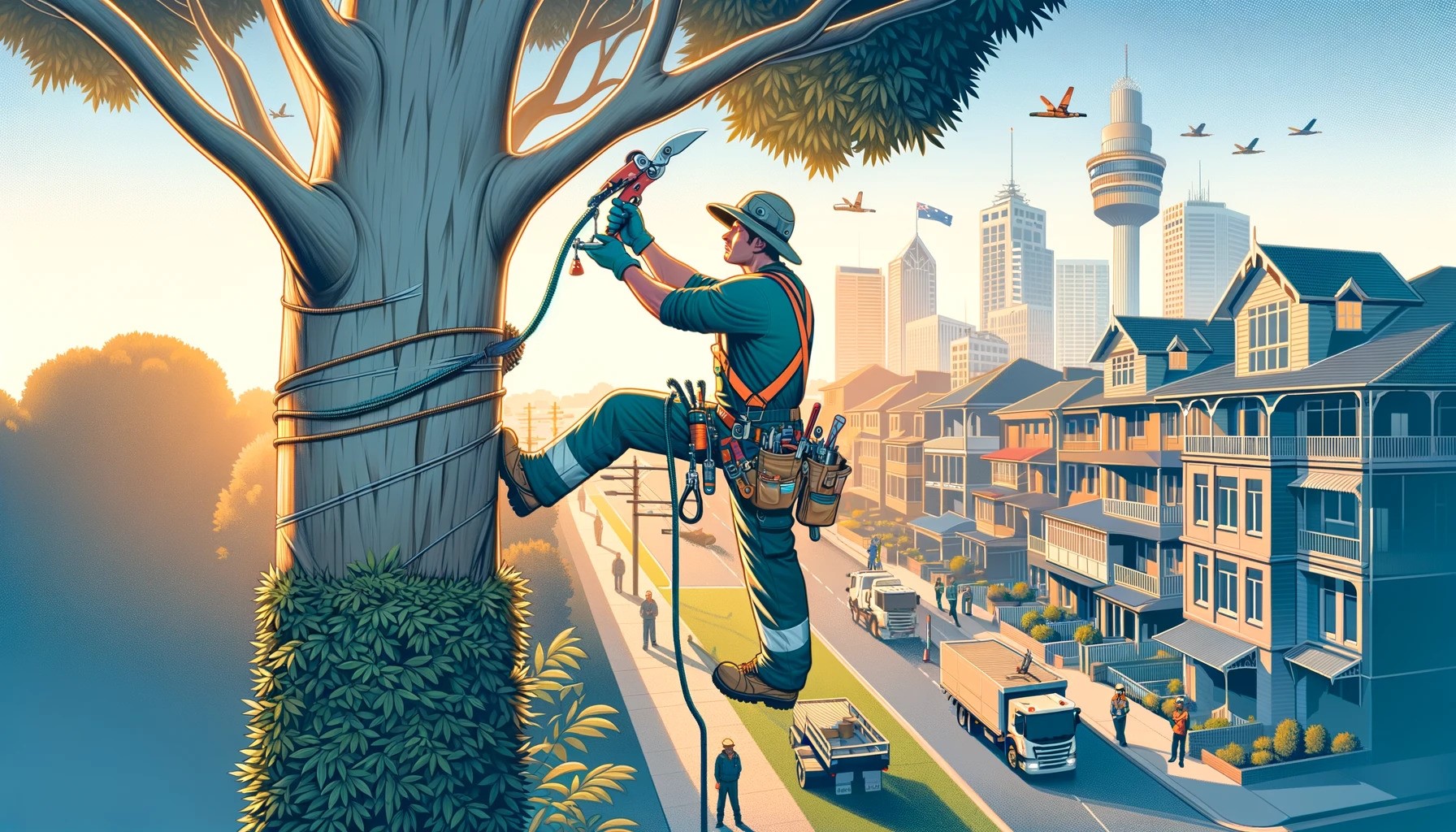
In Newcastle, there are clear-cut standards for how trees should be pruned, all in line with the Australian Standard AS4373. The council’s pretty firm on this: no cutting corners by pruning just to alter a tree’s height or size for personal tastes, or to stop natural stuff like leaves falling.
This approach isn’t about being strict for the sake of it. It’s about ensuring trees stay healthy and structurally sound. Arborists in Newcastle need specific qualifications to carry out pruning, either a Level 2 Grade in Arboriculture or a Level 3 in Horticulture from T.A.F.E. Starting the pruning process early in a tree’s life cuts down on the need for big interventions later, helping the tree grow strong and healthy.
Pruning methods like lifting the crown, reducing it, or cleaning it are all part of keeping a tree in top shape, looking great, and safe by managing its branches and canopy.
Ongoing Tree Maintenance

Regular maintenance is a key piece of the tree care puzzle. When a tree is pruned correctly, the spot where a branch was removed should heal over with a callus, which is crucial for the tree’s health. Techniques like making cuts ¼ inch above an outward-facing bud at a 45-degree angle help direct new growth outward.
Thinning out a tree’s crown can lighten its load, letting more sunlight filter through and improving airflow around the branches. Timing is everything with pruning—most trees do best when pruned in the dormant season of mid to late winter, while the timing for flowering trees should align with their blooming cycles.
Summary

We’ve delved into the intricate maze of tree removal rules in Newcastle, covering everything from getting to grips with council regulations to putting together a thorough application. We’ve looked at the dos and don’ts of tree pruning and what steps to take if your application gets a no-go. Sure, the path to getting a tree removed isn’t exactly a walk in the park—there’s a fair bit of paperwork, expert reports, and sometimes even the need to make a case in front of an appeal board. But, tackling this process head-on is totally worth it for the sake of our community’s well-being and our local environment. Let’s keep on caring for our urban green spaces, making sure Newcastle remains a place where people and nature thrive together.
Frequently Asked Questions
Do you need council approval to cut down a tree in NSW?
Need to know if chopping down a tree in NSW requires a thumbs-up from the council? Yep, it does, as per the Environmental Planning and Assessment Act of 1979. Skip getting that approval, and you’re looking at some hefty fines.
What is the fine for tree removal in NSW?
For individuals, fines can hit up to $220,000, and for corporations, it’s up to a staggering $1.1 million. While those are the ceiling numbers, fines usually fall somewhere between $1,000 and $100,000.
What are some alternative solutions if my application is denied?
Got your application knocked back? Don’t sweat it—there are other routes to consider like pruning, tackling any tree diseases, or even getting some legal insight to beef up your next application. These steps can open up new avenues for you.
What do I need to prepare for my application?
When it’s time to get your application ready, you’ll want to have all your ducks in a row. Make sure you’ve got your property details down pat, an arborist’s report if needed, all the right forms filled out, and a clear site plan with any extra documents. Getting all this sorted from the get-go can help make the whole process smoother.



